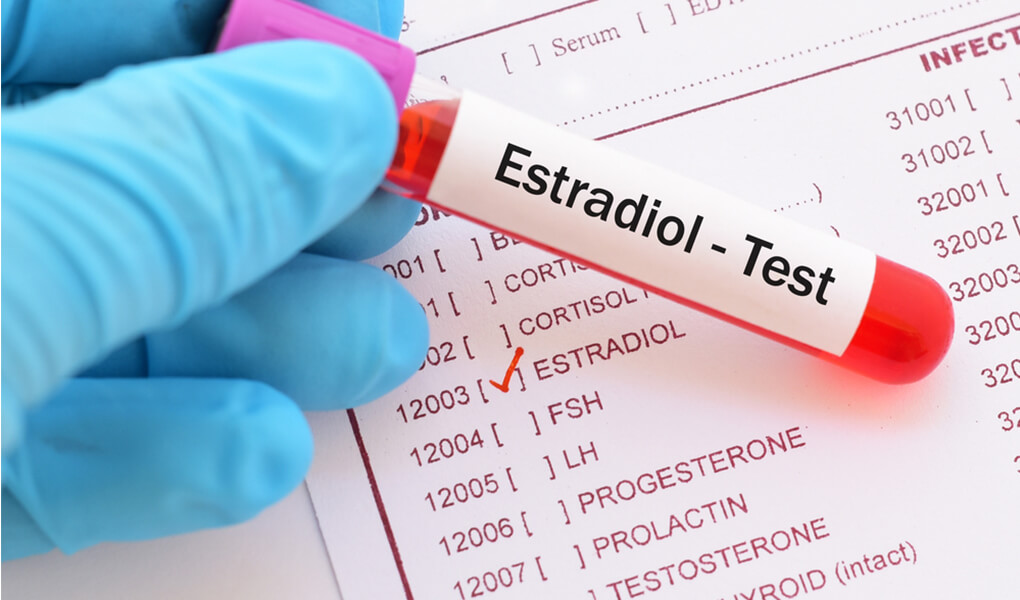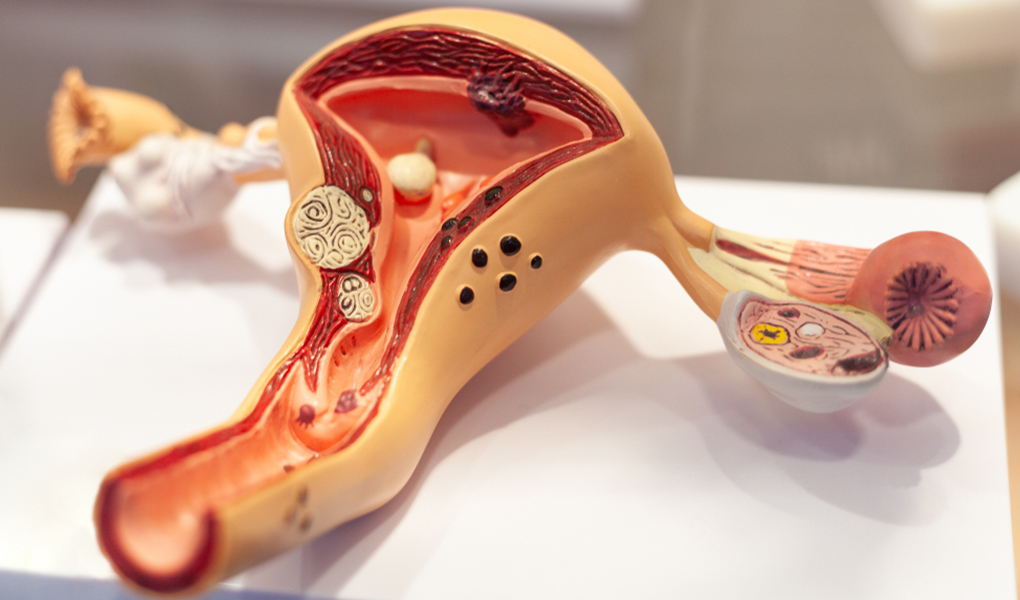The estradiol test is a simple blood test that measures the amount of estradiol in a person’s blood. Estradiol, also known as E2, is one of the three types of estrogens produced by the ovaries. It is also produced in the adrenal glands and breast tissue, although in smaller amounts than the ovaries. In pregnant women, E2 is also secreted from the placenta. Hormones, which are found in smaller amounts in men, are produced in the testes and adrenal glands. It is used to prevent damage to sperm cells during IVF treatment.
Correct estrogen levels are crucial for reproductive health. Too much or too little estrogen secretion can cause different medical problems, such as weak bones, urinary tract infections, and depression. Although estrogen is known as a female sex hormone, it is also effective in the growth and development of men.
What is Estradiol?
Estradiol (E2) is a steroid-estrogen hormone. It is the major sex hormone found in women with normal hormone levels. It is also called 17 beta-estradiol. Estradiol secreted from developing ovarian follicles; Helps the development of the uterus, fallopian tubes, and vagina. It plays an important role in the regulation of the menstrual cycle. It is the basic sex hormone found in women. However, it is also necessary for some functions in men.
Blood estradiol levels affect the development of the male and female reproductive systems. Blood estradiol levels can be checked to check a woman’s fertility, puberty or menopause. Abnormally high or low E2 levels can affect the following organs or functions in men and women:
- Uterus
- Fallopian tubes
- Vagina
- Nipples
- Female external reproductive organs
- Distribution of body fat
- Sperm cells
- Libido
- Erection
Estradiol also has important functions for bone and joint health of women. The female type in the body is responsible for the distribution of fat.
What is Estradiol Test?
Estradiol is a test that measures the amount of estradiol in the blood. It is also called the E2 test. It is made with the blood sample taken from the superficial veins on the arms or back of the hand. No special preparation or fasting is required before the test. However, taking birth control pills or hormone therapy can affect results. Therefore, all medicines, medicinal plants, vitamins and nutritional supplements used should be reported to the doctor. The doctor may ask you to temporarily discontinue certain medications that may affect the test results. Drugs that may affect test results may include:
- Birth control pills
- Antibiotics such as ampicillin or tetracycline
- Corticosteroids
- Estrogen
- Some psychiatric drugs (such as phenothiazine)
- Testosterone
What is the Estradiol Test?
Estradiol testing alone is not sufficient to diagnose any condition or disease. However, the results of the test may guide the need for further examination. Estradiol testing may be required to investigate the causes of the following conditions:
1. Assess the function of the ovaries, placenta or adrenal glands
2. Abnormal development of secondary gender characteristics such as underarm hair growth and breast development in women or men
3. Abnormal menstrual periods
4. Amenorrhea (Menstruation)
5. Abnormal vaginal bleeding
6. Postmenopausal bleeding
7. Infertility in women
8. Premenopausal symptoms such as hot flashes, night sweats and irregular menstrual periods
9. When menstrual bleeding stops and menopause symptoms occur
10. In individuals where female or male gender characteristics do not develop normally
11. Ovarian tumor. If there are symptoms suggestive of ovarian tumors, E2 levels can be checked.
12. Decreased function of ovaries (ovarian hypofunction)
13. Early or late puberty. An estradiol test may be ordered if a child is thought to be in puberty earlier or later than expected. A higher estradiol level than normal indicates that puberty begins earlier. This is a condition known as precocious puberty.
14. Estradiol testing may be needed to determine the cause of high estrogen levels in men.
Tests can also be applied to control;
Follow-up of hormone replacement therapy for women in menopause
Control of treatment efficiency in infertility women
How Much Should Estradiol Be?
Estradiol levels considered normal or healthy vary according to age and sex. For women, pregnancy will also have a major impact on estrogen levels. Which stage of your menstrual cycle may also affect the results.
Women have a high E2 during fertility. After menopause, estradiol levels decrease to almost zero. Normal levels for estradiol are:
- 30 – 400 pg / mL for women of childbearing age
- 0 – 30 pg / mL for postmenopausal women
- 10 to 50 pg / mL for men
- <10 pg / mL for children
Normal values may vary according to the laboratory where the measurement is made. Because in some laboratories different measurements are used or different samples are tested. Therefore, a doctor should be consulted about the results.
Low estradiol test results in women of childbearing age; early menopause, rapid weight loss or anorexia. It may be seen in the presence of tumors of the ovary, testis or adrenal glands.
What Does High Estradiol Indicate?
Estradiol elevation generally means that there is a problem in the ovaries where the hormone is most secreted, causing excess hormone production. Blood estradiol levels may increase in many gynecological problems including endometriosis and cancers of the female reproductive organs. Some of the conditions that may be the cause of elevation of estradiol include:
- Early puberty called puberty precocious
- Ovary or tumors in testicles
- Adrenal gland tumors
- Breast Cancer
- Breast growth called gynecomastia in men
- Hyperthyroidism, which is an excess of the thyroid gland
- Pregnancy
- Liver cirrhosis or severe liver diseases. Impairment of liver function causes the hormone not to be excreted and blood levels rise.
What Does Low Estradiol Mean?
Low estradiol usually means that the ovaries are not functioning properly. Conditions that cause lower than normal estradiol hormone levels include:
1. Gradually produces less estrogen and estradiol, causing symptoms during menopause. The level of estradiol can be used to determine whether the person is ready to enter menopause or whether he is already in transition.
2. Turner syndrome. Women normally have two X chromosomes. Women with Turner syndrome have a single X chromosome instead of two. Turner syndrome is a genetic disease and patients have low E2 levels measured in the blood.
3. Ovarian failure or early menopause. This occurs when the ovaries stop functioning before the age of 40. This may be caused by genetic disorders, toxins or an autoimmune condition.
4. Polycystic ovary syndrome (PCOS). It is a leading cause of infertility in women. It is a hormonal disorder that causes a wide range of complaints.
5. Low body fat rates
6. Excessive exercise and extreme weakness
7. Chronic kidney disease
8. Hypopituitarism. The pituitary gland, also known as the pituitary gland in the brain is a little work. This gland stimulates the release of E2 from the ovaries by the hormone it secretes.
9. Hypogonadism situation of when ovaries or testes do not produce enough hormones
10. Late puberty. Low levels of estradiol may indicate late puberty.
Symptoms of Low Estradiol?
Pre-puberty girls and women approaching menopause are more likely to experience symptoms due to low levels of estrogens. Signs and symptoms that may occur due to low estrogen and estradiol levels may include:
- Fatigue
- Weakness
- Depressed mood
- Attention and focus issues
- Hot flashes
- Frequent urinary tract infections
- Pain during sexual intercourse due to reduced vaginal lubricity
- Irregular menstrual periods
- Menstruation
- Breast tenderness
- Headaches
- Night sweats
- Easy fracture of bones
For all your questions, please contact us at 444 39 49.




Be the first to comment